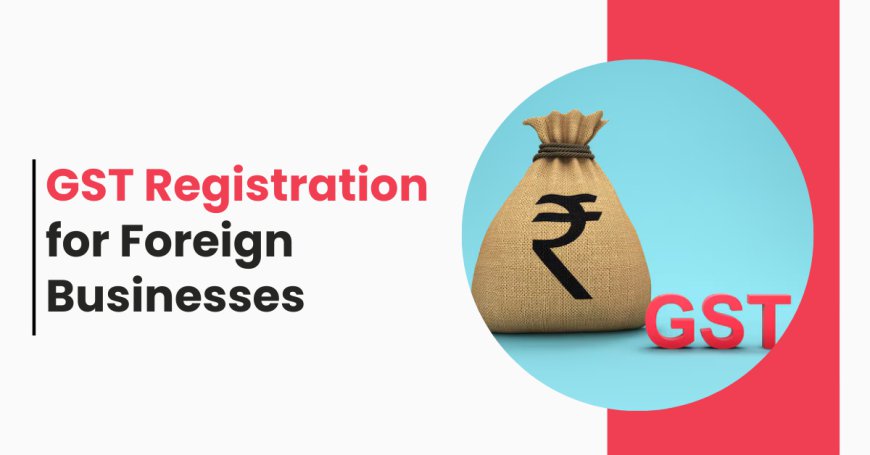GST Registration for Foreign Businesses: A Comprehensive Guide

In recent years, India has emerged as a significant market for foreign businesses looking to expand their operations. Understanding the Goods and Services Tax (GST) and the registration process is crucial for compliance and successful business operation in India. This comprehensive guide outlines everything foreign businesses need to know about GST registration, including the necessary documents required for GST registration.
What is GST?
Goods and Services Tax (GST) is a unified tax system that replaces multiple indirect taxes in India, such as excise duty, service tax, and value-added tax (VAT). Implemented on July 1, 2017, GST aims to simplify the tax structure and promote ease of doing business in India.
Who Needs GST Registration?
Foreign businesses engaging in the supply of goods or services in India must obtain GST registration if they meet specific criteria. These include:
-
Importing Goods: If a foreign entity imports goods into India for sale.
-
Cross-Border Services: Providing services to clients located in India.
-
Threshold Limit: If the business exceeds the prescribed threshold limit for turnover, GST registration is mandatory.
Steps for GST Registration for Foreign Businesses
Step 1: Determine the Type of GST Registration
Foreign businesses can apply for two types of GST registration based on their operations:
-
Regular Taxpayer Registration: For businesses whose turnover exceeds the threshold limit.
-
Composition Scheme Registration: For smaller businesses that want to pay GST at a lower rate but cannot avail input tax credit.
Step 2: Gather the Required Documents
Before starting the registration process, foreign businesses need to gather essential documents. Here are the doc required for GST registration:
-
Business Incorporation Certificate: Proof of business registration in the home country.
-
PAN (Permanent Account Number): A PAN is mandatory for GST registration.
-
Identity and Address Proof: Documents such as passport or utility bills for authorized signatories.
-
Bank Account Statement: A statement of the Indian bank account in the name of the business.
-
Digital Signature: Required for submitting the application.
Step 3: Apply for GST Registration
-
Visit the GST Portal: Go to the official GST portal (www.gst.gov.in).
-
Fill Out the Application: Select "New Registration" and fill out the application form (Form GST REG-01).
-
Upload Documents: Upload the required documents and submit the application.
-
ARN Generation: Upon successful submission, an Application Reference Number (ARN) will be generated.
Step 4: Verification by Authorities
After submitting the application, the GST authorities will verify the provided information and documents. This process may take up to 21 days. If everything is in order, the GST registration certificate will be issued.
Step 5: Obtain GST Registration Certificate
Once approved, the foreign business will receive a GST registration certificate. This certificate is crucial for conducting business operations in India legally.
Conclusion
Understanding and navigating the GST registration process is vital for foreign businesses looking to establish a presence in India. By gathering the necessary documents, such as the doc required for GST registration, and following the steps outlined in this guide, foreign entities can ensure compliance and contribute to their success in the Indian market.
Must Read: GST State Code List
